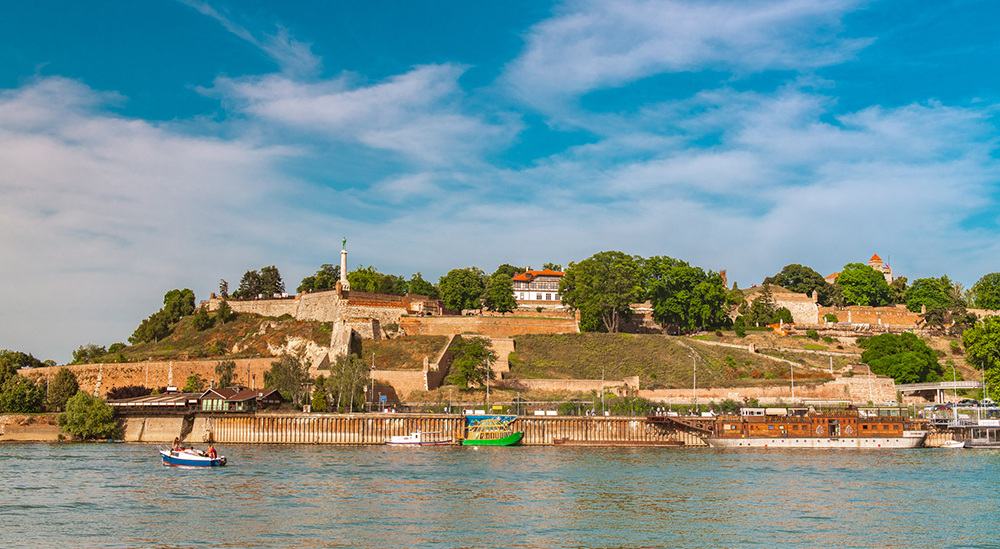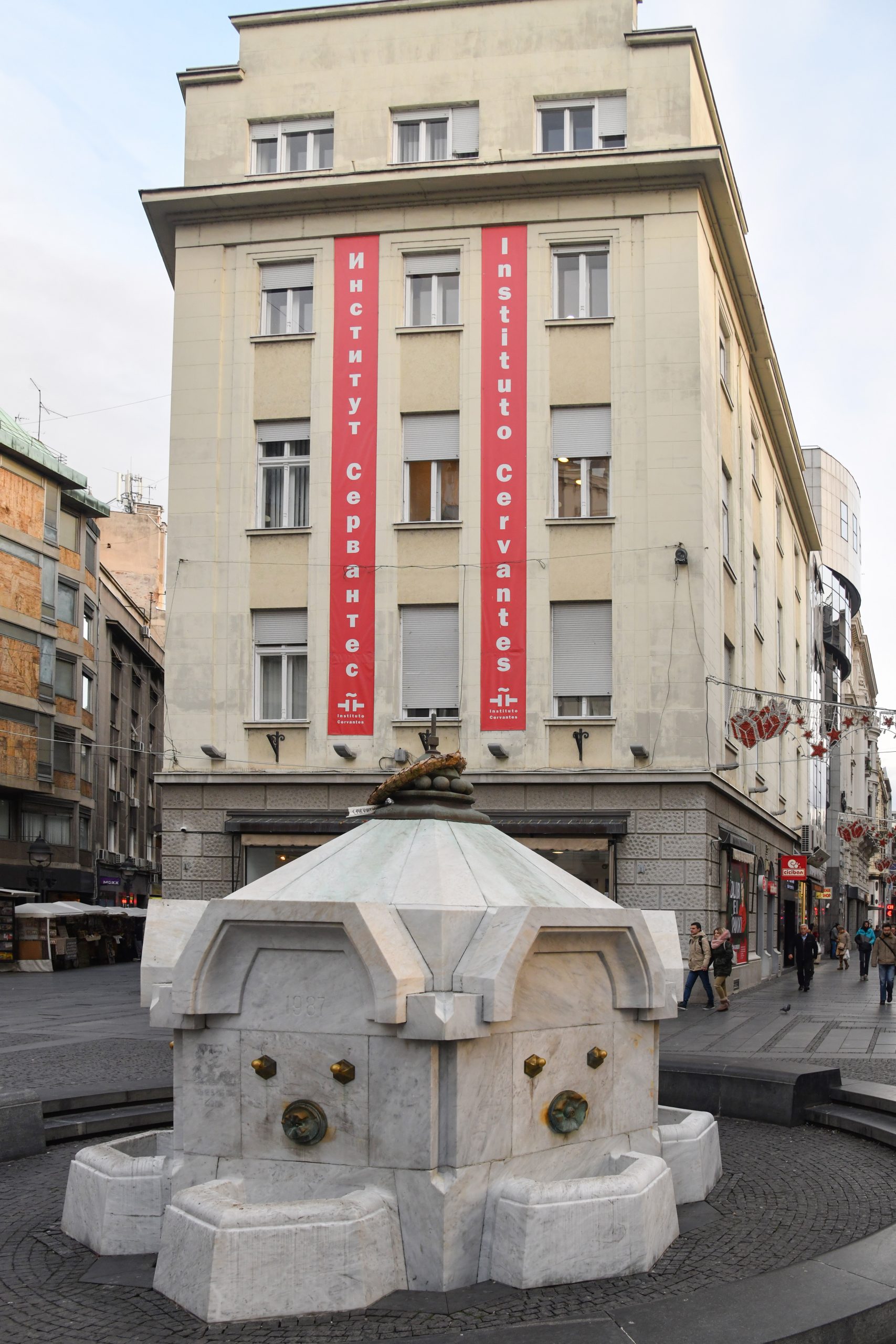OUR BLOG
MUNICIPALITY OF STARI GRAD
The municipality of Stari grad is the central municipality of Belgrade. It preserves the spirit of bygone times, so it is not surprising that in this municipality are located some of the most beautiful and oldest buildings not only of the capital but also of Serbia, as well as prestigious buildings from our rich portfolio, such as the building of the Cervantes Institute.
 Photo : https://www.starigrad.org.rs/bastina/
Photo : https://www.starigrad.org.rs/bastina/
On the other hand, this municipality is the center of city events and urban culture with the most famous Belgrade monuments and neighborhoods, which makes it an authentic and special urban entity.
The municipality is located on the territory of the former Singidunum, and Dorćol was part of the central city life in the Roman era. Formerly the old city center, the current municipality, which covers 698 hectares, was created in 1961 by merging the regions of Skadarlija, Terazije and Stari Grad. Today 70,000 inhabitants live in it.
In addition to Knez Mihailova Street, the lifeblood of the city, this municipality is home to the National Museum and the National Theater, the oldest, First Belgrade High School, the first botanical garden in Serbia, the first restaurant , the “?”, the Student Square with the Rectorate of the University of Belgrade and numerous faculties, the endowment of Ilija Kolarc and the building of Captain Miša, the Ethnographic Museum and the Library of the City of Belgrade.
One of the most impressive buildings in the municipality of Stari Grad is certainly the Old Palace, built in 1882 as the residence of King Milan Obrenović, where he abdicated in favor of his son Aleksandar. Today, it houses the Assembly of the City of Belgrade.
 Кnez Mihailova Street
Кnez Mihailova Street
Statistics show that the municipality of Stari Grad attracts the largest number of tourists annually, and we present you only some of its sights.
Kalemegdan and Belgrade Fortress
Kalemegdan with the Belgrade Fortress have become a trademark of Belgrade. Kalemegdan is considered by many to be the most beautiful park in Belgrade, and the fortress is the oldest preserved complex of monuments in Belgrade, and one of the oldest fortifications in Europe. Its origin dates back to the Roman era, and in its history it had great importance as a shield gainst invaders. The Nebojša Tower was built in the 15th century as an observation post of the Belgrade port, and later became a dungeon. The fortress also houses the Turkish bath “hamam” built around 1870, the “Pobednik” monument, the work of Ivan Meštrović, erected in 1918, as well as the Leopold Zindan, Karađorđeva, Sahat and other gates.

Dorćol
“Dorćol” literally means “the place where four roads cross” in Turkish. On Dorćol, today’s residential district, there is a monument dedicated to the defenders of Belgrade, the church of Alexander Nevsky, the Jewish History Museum, the Bajrakli Mosque and the Old House in Dušanova Street, the oldest building in Belgrade and a characteristic example of baroque construction from the 18th century.
Skadarlija
Known as the bohemian quarter, Skadarska Street got its current name in 1872. Many artists and poets lived there, such as Đura Jakšić and Joakim Vujić. It is decorated with numerous taverns such as “Three Hats”, “Dva Jelena” and “Ima Dana”, it represents the authentic spirit of the capital, and leaves no one indifferent.

Terazije
Terazije got its name from the water supply system that used to be on the site of today’s “Moskva” hotel, which the Turks called by this name. This part of the city has always been the center of social life where the best hotels, restaurants and shops were built. The last reconstruction in 1947 gave it its current appearance, which is dominated by the Terazijska česma, the “Albania” palace, the Abbot’s palace, the “Atina” palace and the Krsmanović house.

The Republic Square
At the place between today’s National Theater and the monument to Prince Mihailo, the Stambol Gate, one of the four gates of Belgrade on the way out of the city, was once located in this area. A road led through it in the direction of Istanbul, after which it got its name.
There was no Republic Square yet, and neither was today’s center of Belgrade. Near the Stambol Gate, the Turks impaled rebellious Serbs, which is why it was extremely notorious and a symbol of suffering under the Ottoman Empire. Therefore, it was demolished in 1866, and after the destruction and construction of the National Theater, this square got its present appearance with the erection of a monument to Prince Mihailo Obrenović in 1882. The monument was made according to the work of the famous Enrik Paci, it is a symbol of old Belgrade, and it is protected as a cultural asset. In addition to the National Theater, the Square also houses the National Museum, the House of Press and the House of the Army, a monument to comedian Branislav Nušić, Serbian insurgent Vasa Čarapić and a memorial plaque to the assassinated Prime Minister Zoran Đinđić.
Trg Republike is a traditional meeting place for Belgraders and numerous concerts and events.
 The Republic Square
The Republic Square
Kosančić’s wreath
Today, there is not much information about the history of Kosančić’s wreath. It is reliably known that in Roman times the city square or Forum was located above the Kosančić crown and the central part of the Forum was the temple of Jupiter. Several ancient altars were found in this place.
On the opposite side of the Forum were the city baths where the remains of the mosaics were found. The oldest preserved buildings on Kosančić’s wreath date from the beginning of the 19th century.
The most important are the Cathedral Church and the residence of pricess Ljubica, and at the time they were built, the settlement began to develop near them.
Precious buildings from the Dipos portfolio
Some of the prestigious buildings from our portfolio are located in the municipality of Stari grad.
The building located at 32 Knez Mihailova street, was known as the American Corner for several decades after the Second World War until the spring of 1999.
In the middle of 2004, the Cervantes Institutute was opened in this building. The cultural mission of the institute is to promote the Spanish language and the culture of Spanish-speaking countries.
 To older residents of Belgrade, this building was also known as “Palata Zora,” which due to its location and beautiful exterior, has often found itself as a representative image on postcards from Belgrade. Built in 1904, it was constructed on the site of an older one-story building owned by the brothers, Constanine and Nikola Z. Popović. The contractors Mita and Rista Spasić built the project, which was prepared by the architect Milan Antonović. The Popović brothers were famous jewlers and owned a well-known jewelry store, that from 1880 – 1905 had a leading position on the Belgrade Stock Exchange. During their careers, Constantine and Nikola supplied the royal court with expensive jewelry and other objects made of precious metals and stones.
To older residents of Belgrade, this building was also known as “Palata Zora,” which due to its location and beautiful exterior, has often found itself as a representative image on postcards from Belgrade. Built in 1904, it was constructed on the site of an older one-story building owned by the brothers, Constanine and Nikola Z. Popović. The contractors Mita and Rista Spasić built the project, which was prepared by the architect Milan Antonović. The Popović brothers were famous jewlers and owned a well-known jewelry store, that from 1880 – 1905 had a leading position on the Belgrade Stock Exchange. During their careers, Constantine and Nikola supplied the royal court with expensive jewelry and other objects made of precious metals and stones.







 2018
2018